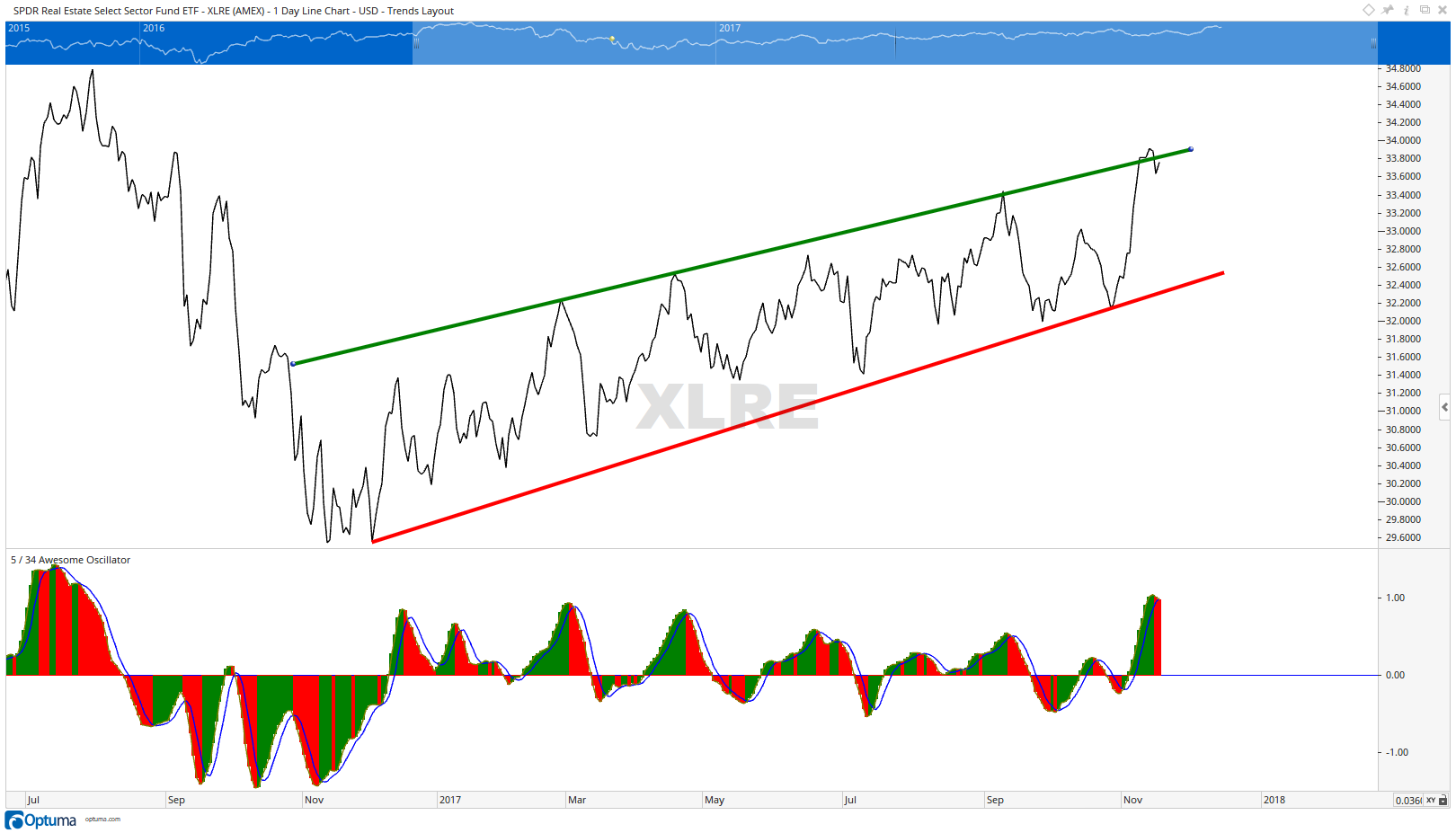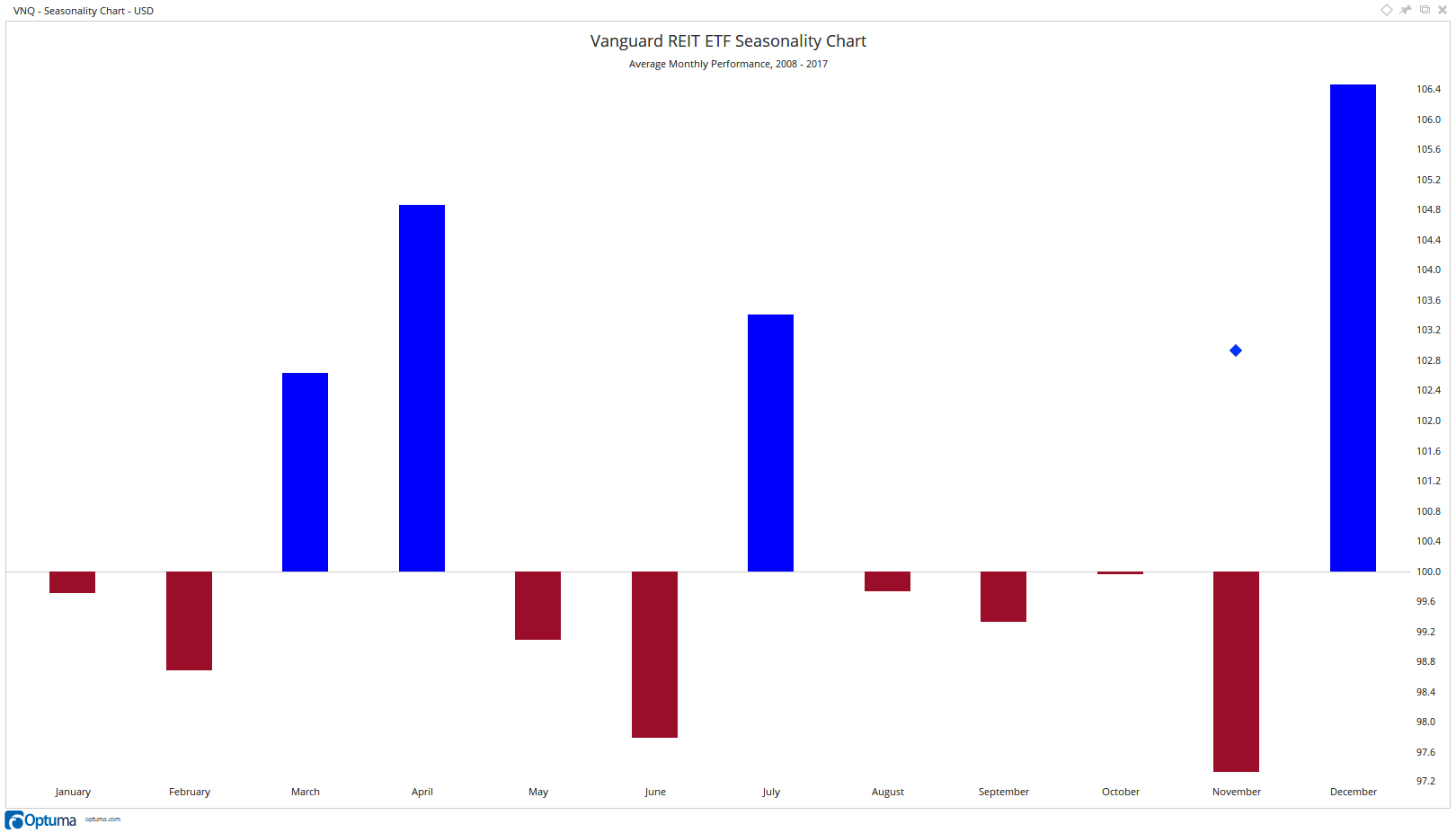
Source: Shutterstock
Figuring out how to start a retirement fund can be a daunting task for any investor, but that is especially true for younger, novice investors that are nowhere near retirement age.
Investors wondering how to start a retirement fund do not need to scramble for ideas and vehicles to immediately start retirement planning. Easy-to-access instruments include 401k plans (for some workers) and individual retirement accounts (IRAs).
“You may want to think about opening an IRA in addition to or instead of a 401k plan if your employer doesn’t offer one. Even if you have a 401k, you may have more investment choices through an IRA,” according to Bank of America Merrill Lynch. “Whether you choose a Traditional or Roth IRA will depend largely on your income and age. (If you’re a small business owner, you may also be able to contribute to a small business IRA).”
For novice investors pondering how to start a retirement account, exchange-traded funds and mutual funds are excellent places to start for a number of reasons, including the ability to bolster portfolio diversification and access multiple asset classes.
With that in mind, here are a few ideas for investors wondering how to start a retirement fund.
ETFs for Starting a Retirement Fund

Vanguard Total Stock Market ETF (VTI)
Expense Ratio: 0.04% per year, or $4 annually per $10,000 investment
Home to $101.8 billion in assets under management at the end of July, the Vanguard Total Stock Market ETF (NYSEARCA:VTI) is the third-largest U.S.-listed ETF by assets. Across its various share classes, the Vanguard Total Market Fund is one of the largest index funds in the world with nearly $726 billion in combined assets under management.
Not only that, but VTI is cheap. Really cheap. Its annual fee of just 0.04%, which makes it less expensive than 96% of competing funds, according to Vanguard data. Focusing on fees is an important factor for investors wondering how to start a retirement fund because when investing for the long-term, the more an investor saves on fees, the more his or her capital grows.
Another element investors pondering how to start a retirement account need to consider with equity investments is broad-based exposure. VTI delivers on that with a roster of more than 3,650 stocks, or more than seven times the number of components found in the S&P 500.
ETFs for Starting a Retirement Fund
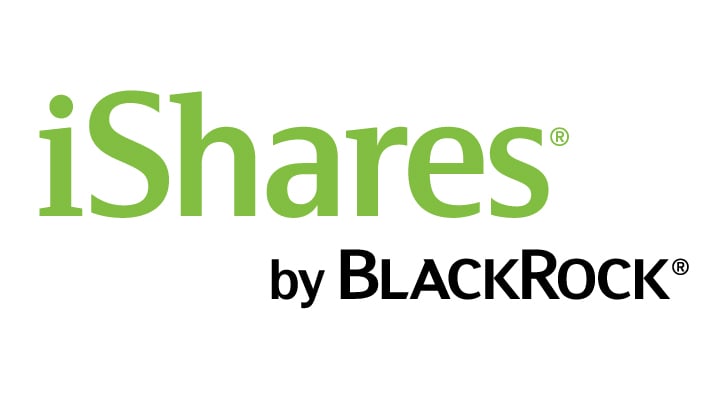
iShares Core S&P U.S. Growth ETF (IUSG)
Expense Ratio: 0.04%
Younger investors pondering how to start a retirement account should remember that they have the benefit of time, meaning some of their investments should be aggressive in nature. Growth stocks fit the bill as aggressive plays.
The iShares Core S&P U.S. Growth ETF (NASDAQ:IUSG) offers cost-effective exposure to a broad basket of domestic large- and mid-cap growth stocks. This $5.11 billion ETF, which turned 18 years old in July, tracks the S&P 900 Growth Index and holds 543 stocks.
Something else investors wondering how to start a retirement account should remember about growth strategies is that this investment factor typically leans toward the technology and consumer discretionary sectors. IUSG allocates nearly 57.50% of its combined weight to those sectors compared to just under 39% in the S&P 500.
ETFs for Starting a Retirement Fund
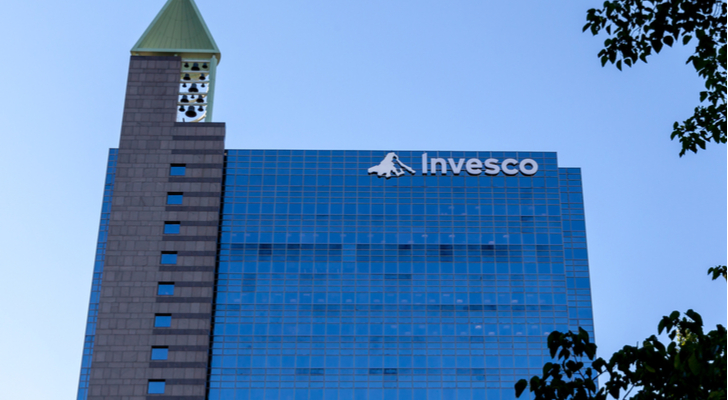
Invesco QQQ (QQQ)
Expense Ratio: 0.20%
Keeping with the theme of younger investors being aggressive in the earlier stages of establishing retirement accounts, the Invesco QQQ (NASDAQ:QQQ) is a fund worthy of consideration.
QQQ, which tracks the Nasdaq-100 Index, is home to 103 stocks, nearly 61% of which are classified as growth stocks. And if the exposure to technology and consumer discretionary stocks in a typical growth fund is not enough, QQQ devotes over 82% of its roster to those two sectors.
QQQ is also an appropriate vehicle for investors looking for exposure to each of the FAANG stocks. Those five stocks combine for approximately 40% of the ETF’s weight.
ETFs for Starting a Retirement Fund

WisdomTree U.S. LargeCap Dividend Fund (DLN)
Expense Ratio: 0.28%
A frequently asked question when wondering how to start a retirement fund is how to generate income. Dividend-paying stocks are a key component of that equation and the WisdomTree U.S. LargeCap Dividend Fund (NYSEARCA:DLN) is one of the better dividend ETFs to consider.
DLN is not a yield-focused strategy, nor does it take into account for how many years a company has boosted its payout. Rather, the fund’s underlying index, “is dividend weighted annually to reflect the proportionate share of the aggregate cash dividends each component company is projected to pay in the coming year, based on the most recently declared dividend per share,” according to WisdomTree.
DLN’s expense ratio is higher than some of the legacy funds in this category, but DLN also warrants that fee because, over long holding periods, it has handily outperformed some of its cheaper rivals. The fund, which yields almost 2.50% on a trailing 12-month basis, allocates about 45% of its combined weight to the technology, financial services and healthcare sectors.
ETFs for Starting a Retirement Fund

Vanguard Intermediate-Term Corporate Bond ETF (VCIT)
Expense Ratio: 0.07%
Investors wondering how to start a retirement account should remember that diverse, effective retirement planning also includes some fixed income exposure. The Vanguard Intermediate-Term Corporate Bond ETF (NASDAQ:VCIT) can help with that.
Historically, investment-grade corporate bonds are not significantly more volatile than U.S. government debt, but corproates do offer a better income profile, making this an ideal, lower risk asset class for retirement-minded investors. VCIT holds over 1,700 bonds, but over a third of its portfolio comes via financial services issuers.
“The strategy’s five-year annualized return through June 2018 of 3.5% matched the category average. The portfolio’s low fee helped it produce the competitive return against its peers that dabble in higher-yielding junk bonds,” according to Morningstar.
ETFs for Starting a Retirement Fund

Invesco S&P SmallCap 600 Pure Value ETF (RZV)
Expense Ratio: 0.35%
Historical data confirm that one of the most potent factor combinations is size and value. Novice investors pondering how to start a retirement fund should include small-cap and value stocks in that fund. The Invesco S&P SmallCap 600 Pure Value ETF (NYSEARCA:RZV) conveniently does that and has been one of the best-performing small-cap funds during the current bull market in U.S. stocks.
RZV tracks the S&P SmallCap 600 Pure Value Index and holds 165 stocks with an average market capitalization of just over $1 billion. Over longer holding periods, RZV has been less volatile than broader small-cap benchmarks, such as the Russell 2000 Index.
Although it is a value fund, RZV allocates over 35% of its weight to the consumer discretionary sector, a group often associated as a growth destination. Industrial and financial services names combine for over 28% of RZV’s weight.
Over the past three years, which were a trying time for value stocks, broadly speaking, RZV has outpaced the large-cap S&P 500 Value Index, by 320 basis points.
ETFs for Starting a Retirement Fund
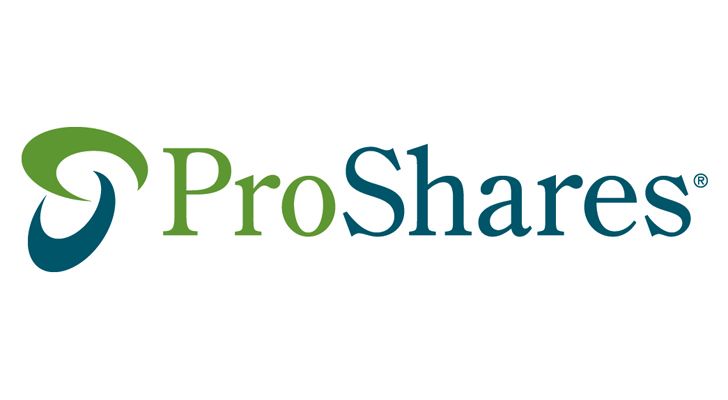
ProShares Investment Grade–Interest Rate Hedged (IGHG)
Expense Ratio: 0.30%
If you’re wondering how to build a retirement account in a rising interest rate environment, a newer breed of bond funds offer protection against Federal Reserve tightening cycles. The ProShares Investment Grade—Interest Rate Hedged (BATS:IGHG) was one of the first ETFs to offer income and rising rates protection under one umbrella.
IGHG has a minuscule net effective duration of 0.04 years and arrives at the reduced sensitivity to rising rates by “including a built-in hedge against rising rates that uses short positions in U.S. Treasury futures,” according to ProShares.
Traditionally, short-term bond funds mean less income as the trade-off for reduced rate risk, but that is not the case with IGHG. The ProShares fund offers a solid 30-day SEC yield of 4.04%, which is exceptional among rate-hedged and investment-grade bond funds.
As of this writing, Todd Shriber did not hold a position in any of the aforementioned securities.
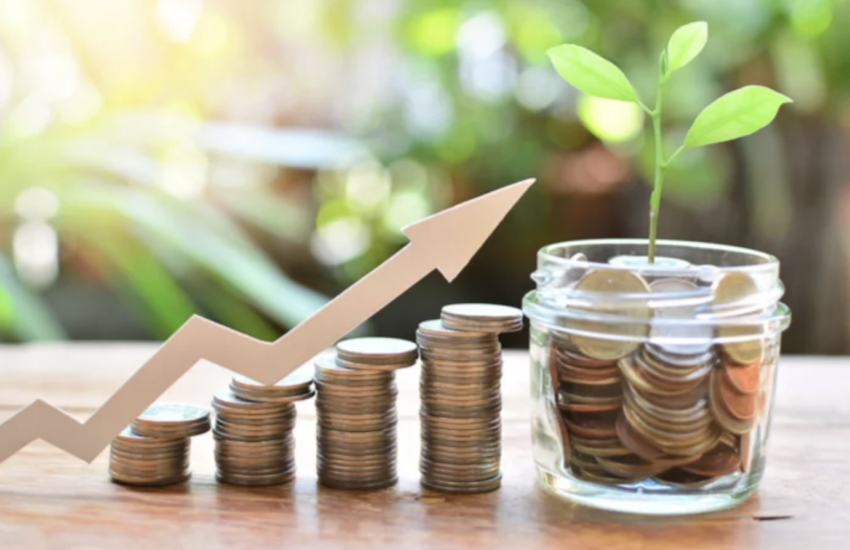
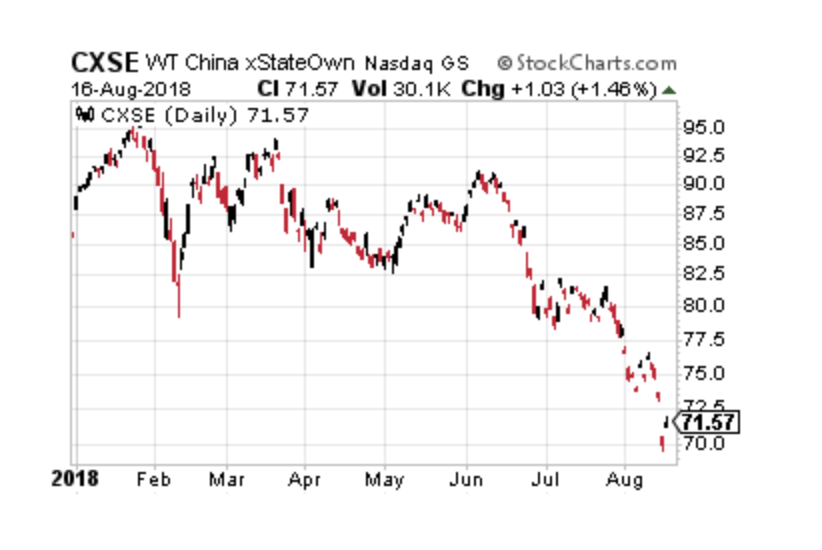
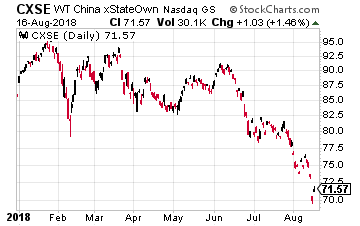
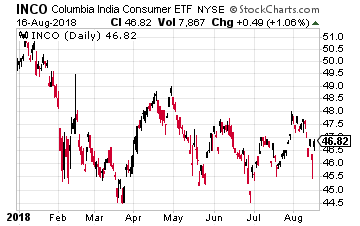 For India, an ETF to consider is the Columbia India Consumer ETF (NYSE: INCO). This is down 8% year-to-date, but is still up 7% over the last year. Its top three positions include local subsidiaries of well-known consumer brands – Nestle India and Hindustan Unilever. Number three is perhaps India’s best-known food company, Britannia Industries.
For India, an ETF to consider is the Columbia India Consumer ETF (NYSE: INCO). This is down 8% year-to-date, but is still up 7% over the last year. Its top three positions include local subsidiaries of well-known consumer brands – Nestle India and Hindustan Unilever. Number three is perhaps India’s best-known food company, Britannia Industries.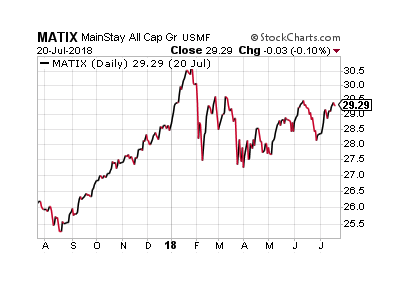
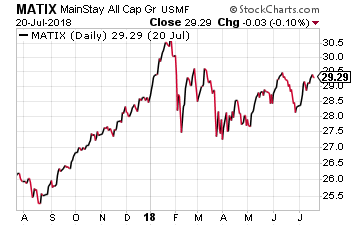 The first is an old-fashioned, but effective, way. You can buy a mutual fund from a company whose sole focus is Asia – the Mathew Asia Dividend Fund (MUTF: MATIX). Its top holdings include well-known blue chips such as Taiwan Semiconductor and HSBC.
The first is an old-fashioned, but effective, way. You can buy a mutual fund from a company whose sole focus is Asia – the Mathew Asia Dividend Fund (MUTF: MATIX). Its top holdings include well-known blue chips such as Taiwan Semiconductor and HSBC.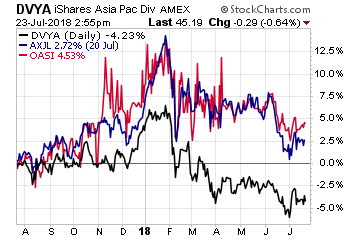

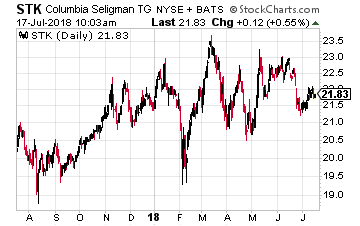 Columbia Seligman Premium Technology Growth Fund (NYSE: STK) seeks capital appreciation through investments in a portfolio of technology related equity securities and current income by employing an option writing strategy.
Columbia Seligman Premium Technology Growth Fund (NYSE: STK) seeks capital appreciation through investments in a portfolio of technology related equity securities and current income by employing an option writing strategy.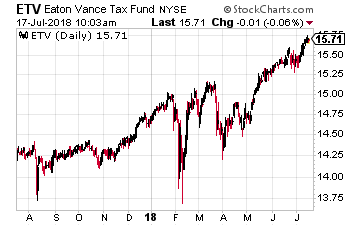 Eaton Vance Tax-Managed Buy-Write Opportunities Fund (NYSE: ETV) invests in a diversified portfolio of common stocks and writes call options on one or more U.S. indices on a substantial portion of the value of its common stock portfolio to generate current earnings from the option premium. Buy-Write is another name for covered call writing. Also, as the fund name states, the managers strive to generate the best after tax returns. The fund uses the S&P 500 stock index as its benchmark evaluate returns.
Eaton Vance Tax-Managed Buy-Write Opportunities Fund (NYSE: ETV) invests in a diversified portfolio of common stocks and writes call options on one or more U.S. indices on a substantial portion of the value of its common stock portfolio to generate current earnings from the option premium. Buy-Write is another name for covered call writing. Also, as the fund name states, the managers strive to generate the best after tax returns. The fund uses the S&P 500 stock index as its benchmark evaluate returns.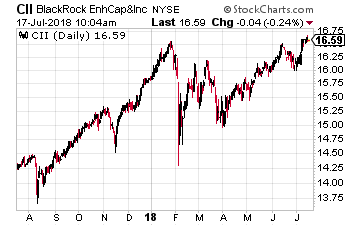 BlackRock Enhanced Capital & Income Fund (NYSE: CII) seeks to achieve its investment objective by investing in a portfolio of equity securities of U.S. and foreign issuers. The fund also employs a strategy of selling call and put options.
BlackRock Enhanced Capital & Income Fund (NYSE: CII) seeks to achieve its investment objective by investing in a portfolio of equity securities of U.S. and foreign issuers. The fund also employs a strategy of selling call and put options.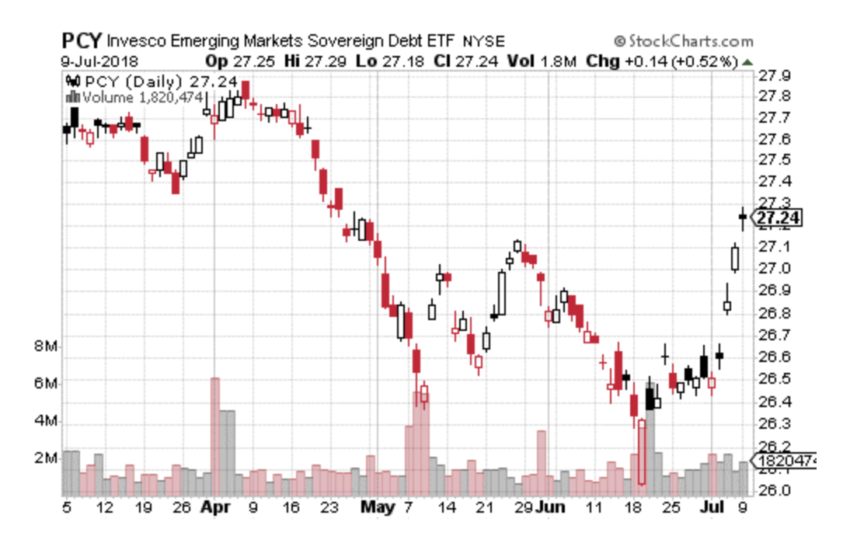
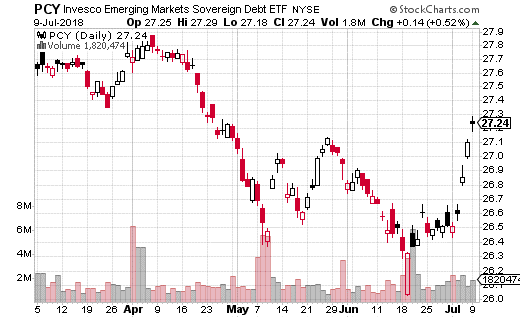
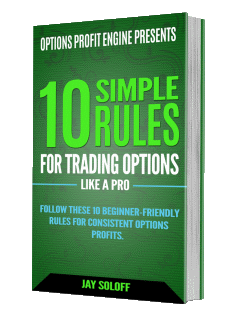
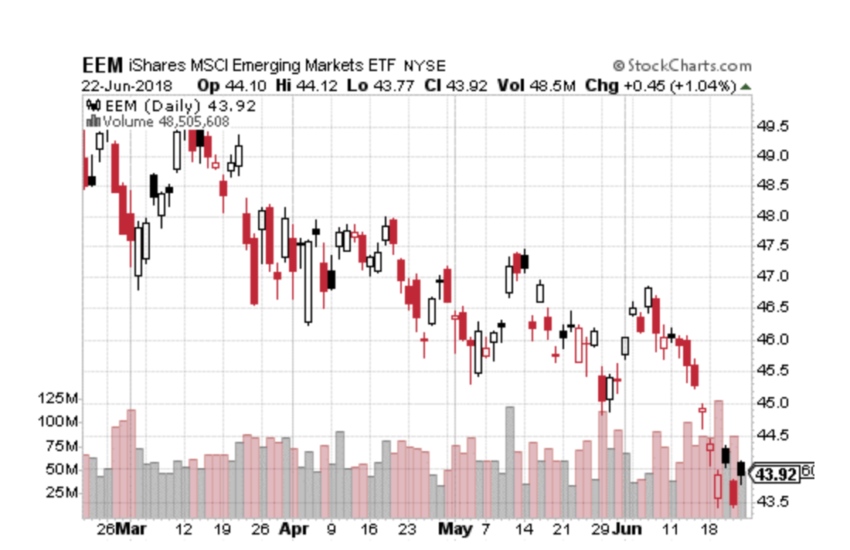
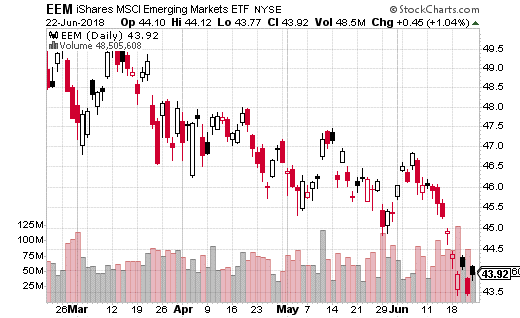

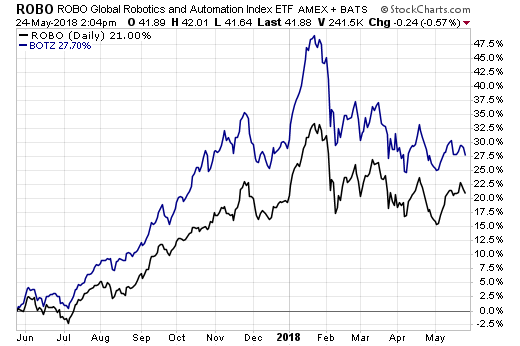
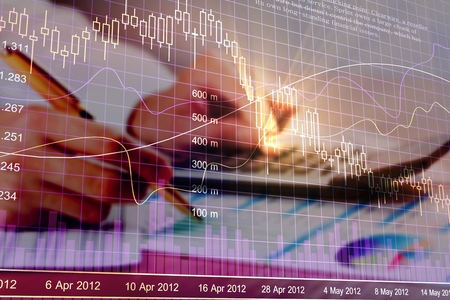






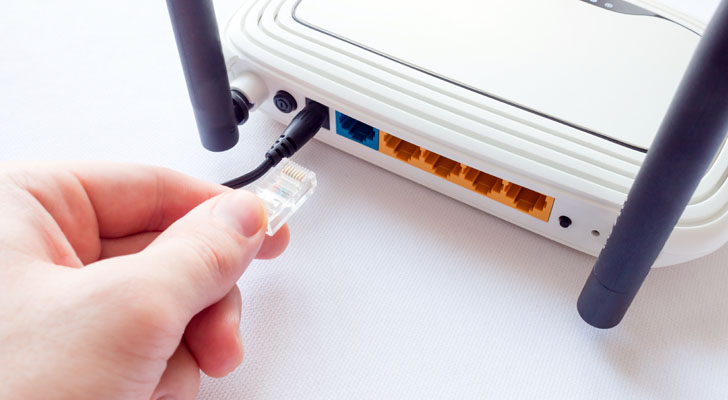
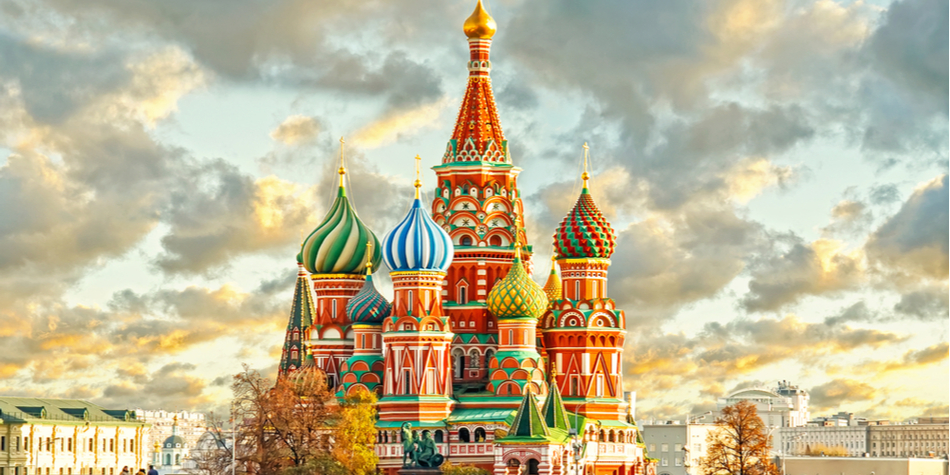



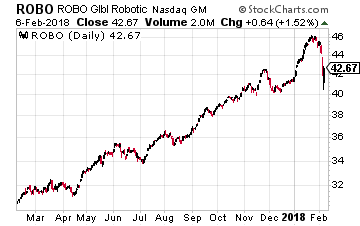 With volatility currently cranking higher, if you’re looking for a more diversified way to play this trend, take a look at the ROBO Global Robotics and Automation ETF (Nasdaq: ROBO).
With volatility currently cranking higher, if you’re looking for a more diversified way to play this trend, take a look at the ROBO Global Robotics and Automation ETF (Nasdaq: ROBO).
